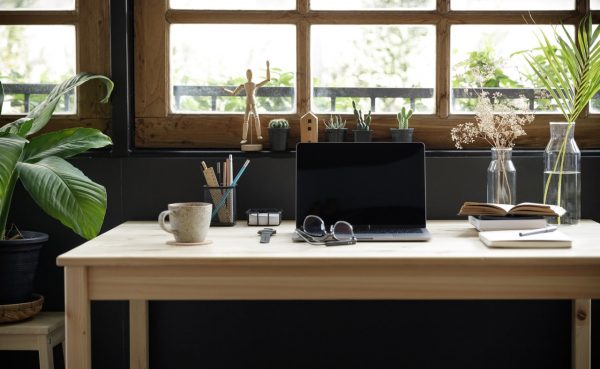
These days of quarantine may have been the first time many of us have worked from home for any length of time. This certainly isn’t working from home as usual. We could say that we are part of an extreme global experiment in teleworking, and not by choice.
In the professional world, this situation has forced us to take on new tools; to alter our surroundings, our schedules, and our routines; and on top of that, to adapt our ways, rhythms, and our repertoire of skills.
Adapting to this new situation is actually a huge lesson in itself, and we surely are not aware of the amount of new knowledge and experiences that we’ve acquired at the end of the week.
One way to take advantage of this quarantine – a way that is different, challenging, positive, and comforting – may be to settle into a mindset of conscious and constant learning, focusing on our personal and professional development.
Here are some ideas that may help put this habit into practice during this period of confinement:
Set short-term learning goals for yourself: we don’t know how long the state of emergency will last in Spain, but let’s assume that it won’t last more than two months. You can reflect on your personal and professional development goals, which you set for yourself at the beginning of the school year or the calendar year, as well as thinking about steps to take during this time that will get you closer to achieving them. For example, if your goal is to expand in your area of expertise and become a professional leader in your field, perhaps a good next step is to publish an article on a blog or an entry on LinkedIn. Why not set a goal to write that article and publish it in the next 10-15 days? If you don’t have any learning objectives yet, you can always find some inspiration from one of the tests on platforms like Foxize, Curious (Curious Quotient), and Manpower (Learnability Quotient) as a starting point.
Make time: in this state of confinement, not only is it highly likely that you will have no time to spare but most days, you will run short of time. In many homes, working from home has to be done along with childcare and domestic chores, among many other things. But just as we find time for physical exercise, it is essential to set time aside for yourself to train every day or every week. It can be before or after lunch, first thing in the morning, or the last thing you do each day. Fifteen or 20 minutes every day may be enough to move forward in a training course, watch a video, or read an article; longer periods, perhaps on weekends, might be enough to read a book or do activities that require a little more time.
Set up your personalized learning space: this quarantine can be a good time to organize a virtual learning ecosystem for yourself. The PLE – Personal Learning Environment – is a set of elements (resources, activities, sources of information) that are used for managing personal learning. The good news is that today, we have access to a vast number of digital platforms and resources where quality learning content can be found. During the Coronavirus crisis, some of these channels, which usually require payment, are offering free access to certain content. This is a good opportunity to get to know them and see if they fit our needs: LinkedIn Learning, Coursera, edx, IESE, IE, and ESADE are just a few.
There’s a little bit of everything: as with almost everything, virtual learning also accounts for taste. There are those who prefer MOOCs on Coursera, edx, or Miriadax and those who prefer to use Leader Summaries before choosing a good book to enjoy, underlining it and taking notes in the margins. Others prefer ebooks or even audiobooks, as with Storytel; those who take advantage of commuting or wait times to learn by listening to podcasts on iVOOX, Apple, Google, or Spotify, those who prefer YouTube’s How To channels or listen to TED talks, those who post questions in forums or professional chatrooms like Yammer… It all depends on individual preferences, but also on what we want to learn, the depth of knowledge that we need, how much time we have, what we need it for… Best of all, all of these tools are free and within reach for anyone.

Put AI to work for you: thanks to social networks, newsletters, automatic ads, and so on, you can create a content curation system that works for you. To complete your PLE, you can follow people, companies, and institutions that periodically update their followers on social networks like Twitter or LinkedIn with information on trends, news, opinions, and other relevant information. This will help you stay up to date. Choose carefully and unsubscribe or stop following anyone who doesn’t provide what you want. It’s better to have a few useful sources than to be inundated. There are also platforms like Degreed and Capaball that will help you choose content on the web, depending on your preferences.
Social Learning: even though we’re living through times of social isolation, we are connected more and better than ever, and this greatly facilitates the possibility of learning from and with other people. Asking for help, advice, recommendations, and having a conversation with a colleague or several people remotely has never been so easy. How many of us are staying connected with our family or friends on platforms like Teams, Zoom, Skype, HouseParty, and HangOut? Simply knowing these platforms and learning how to use them is a skill in itself. Since we’re talking about social learning, why not learn as a family in these times of confinement? Platforms like Duolingo and Lingokids for language learning or Smartick for mathematics can help us work on these sorts of knowledge with the youngest members of the household in a way that is practical, informative, and fun.
Write and reflect: stop and think periodically (every day, every other day, every week) about what you’ve learned that day. Write it down and ask what benefits this learning has for day-to-day life and the extent to which it helps reach your development goals. This is a fundamental part of the process. It’s a small habit that does not take much time, but it helps us train our muscle for conscious learning. When we look back, this will be a pleasant surprise for us.
As with any new habit, our consistent, conscious learning plan will require time to take hold. There will be some days when it comes almost effortlessly, and others when it is harder to fit in. Nonetheless, focusing on it in the same spirit with which we exercise, it will surely become one of many good things that we put into practice these days, something that will help us come out of this crisis a little bit better, a little stronger, with a little habit that will make big differences.





There are no comments yet